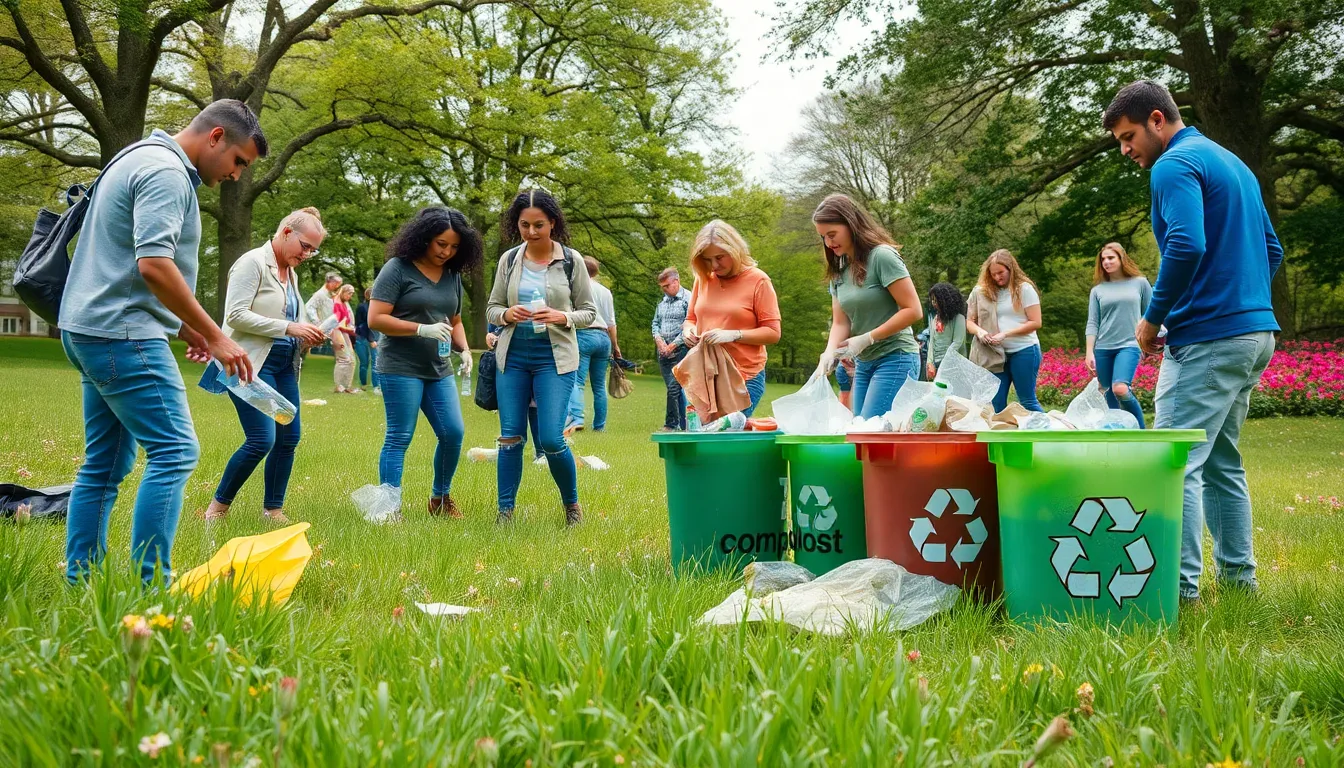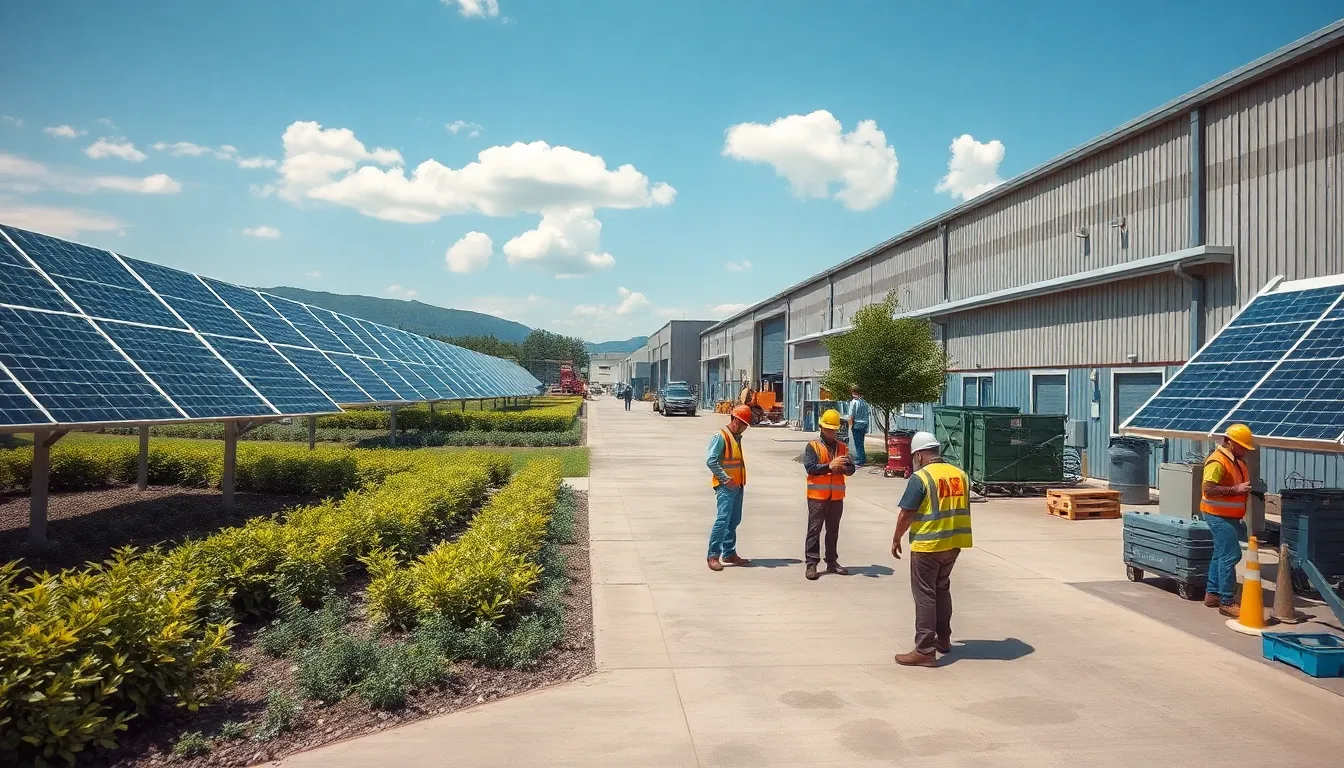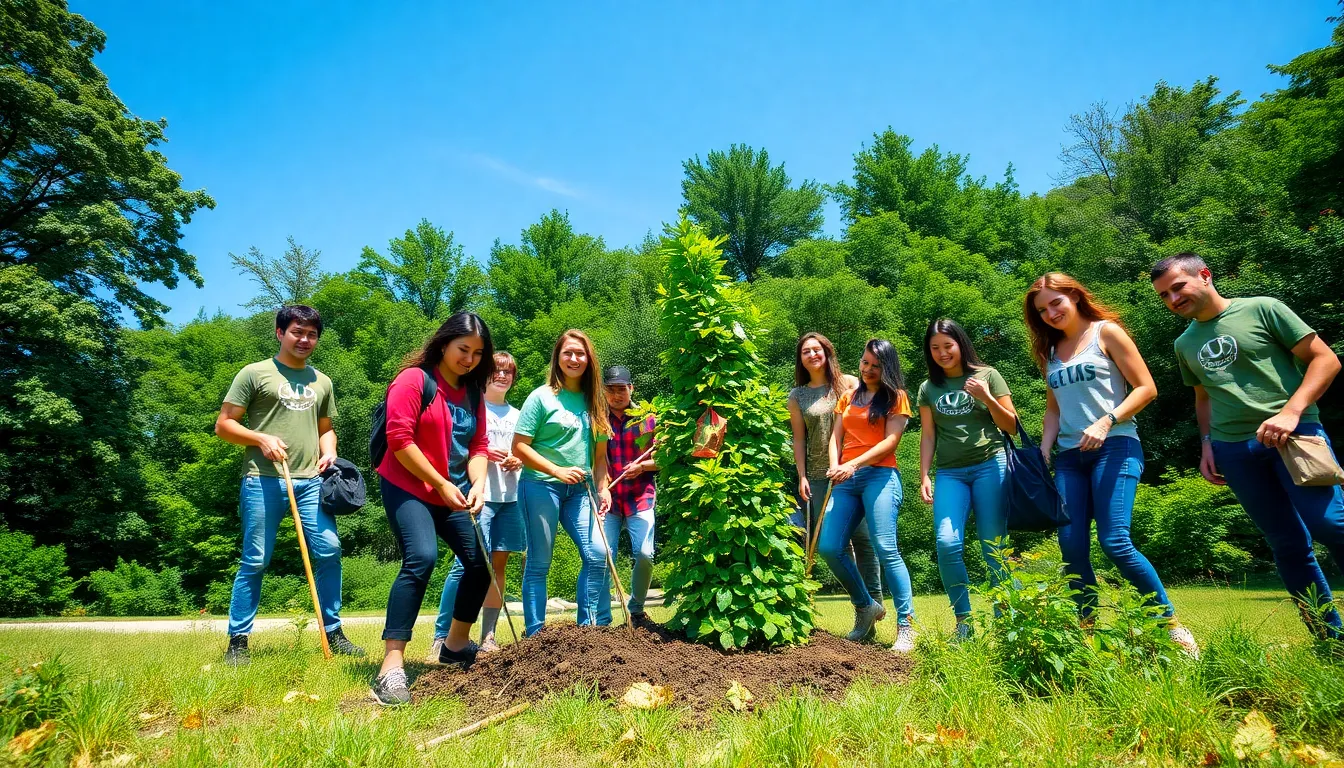Table of Contents
ToggleIn a world overflowing with stuff we don’t need, waste reduction strategies are like the superhero capes we all need to don. Picture this: less clutter, more space, and a planet that doesn’t look like it just survived a tornado of junk. Sounds appealing, right? Implementing simple yet effective waste reduction techniques can transform not just how we live but also how we protect our precious environment.
From reusable shopping bags to composting like a pro, these strategies are both practical and, dare we say, fun. Imagine impressing your friends with your eco-friendly prowess while saving a few bucks along the way. It’s time to take action, reduce that waste, and show Mother Earth some love. Buckle up for a journey filled with clever tips and tricks that’ll make waste reduction feel less like a chore and more like a lifestyle upgrade.
Overview of Waste Reduction Strategies
Waste reduction strategies play a crucial role in minimizing the impact of waste on the environment. Implementing practices like reusing items, recycling materials, and composting organic waste leads to less trash in landfills. Furthermore, these strategies promote efficient resource use, polishing individual commitment to sustainability.
Using reusable shopping bags exemplifies a simple yet effective waste reduction technique, eliminating single-use plastic bags from circulation. Opting for digital receipts instead of paper can also significantly decrease paper waste. Composting kitchen scraps enriches gardens while preventing organic waste from contributing to landfill overflow.
Participating in a local exchange program allows communities to share goods and services, reducing the need for new purchases. Donating unused items to charities fosters a cycle of reuse, benefiting others while minimizing waste. Conducting a waste audit helps individuals identify which materials contribute most to their waste, enabling targeted reduction efforts.
Engaging in mindful consumption is essential. This involves considering the environmental impact of purchases, favoring products with minimal packaging or those made from recycled materials. Creating a zero-waste plan can streamline efforts, combining various strategies tailored to specific needs.
Investing time into planning meals prevents food waste, allowing families to use ingredients effectively. Additionally, adopting digital tools for organization reduces the need for physical materials like planners and notebooks. Such actions inspire others to consider waste reduction as part of their lifestyle.
Integrating these strategies showcases a commitment to maintaining a cleaner environment. The cumulative effects of individual actions can drive significant change in waste generation, enhancing overall community health.
Importance of Waste Reduction

Waste reduction strategies play a vital role in fostering environmental sustainability and economic growth. Implementing these strategies encourages individuals and communities to minimize waste while promoting efficient resource use.
Environmental Impact
Reducing waste significantly lowers greenhouse gas emissions. Less waste in landfills results in cleaner air and soil. Practices like recycling and composting conserve natural resources by minimizing the demand for virgin materials. Reusing items also reduces the need for manufacturing, leading to decreased energy consumption. Programs promoting digital receipts can drastically cut paper waste. As a result, these actions contribute to protecting ecosystems and biodiversity, ensuring a healthier planet for future generations.
Economic Benefits
Waste reduction strategies can lead to substantial cost savings. Individuals save money by reusing items and purchasing fewer new products. Local economies benefit from community exchanges, allowing for the sharing of goods and services. Businesses that adopt waste reduction techniques often experience reduced operating costs. Additionally, companies performing waste audits frequently identify opportunities to streamline processes, increasing efficiency. Over time, these savings can boost overall financial health, making waste reduction a smart investment.
Types of Waste Reduction Strategies
Waste reduction strategies encompass various techniques aimed at minimizing waste output while promoting a sustainable environment. Implementing these strategies creates cleaner communities, conserves resources, and supports economic efficiency.
Source Reduction
Source reduction focuses on minimizing waste at its origin. This practice involves producing less waste through thoughtful purchasing decisions and efficient manufacturing processes. Individuals can choose products with minimal packaging, reducing materials that end up in landfills. Companies can streamline their production methods for lower waste output. Adopting digital invoices and receipts cuts down on paper use. Prioritizing durable goods limits the need for replacements, prolonging product lifespan.
Recycling and Reuse
Recycling and reuse play significant roles in waste reduction strategies. Recycling converts waste materials into new products, reducing the need for raw materials. Commonly recycled items include paper, glass, metal, and plastics. The recycling process often uses less energy, lowering greenhouse gas emissions. Reusing items extends their lifecycle, preventing unnecessary waste. Thrift stores and local exchanges encourage the circulation of goods instead of disposal. Donating surplus items not only clears space but also provides resources to those in need. Engaging in these practices fosters a circular economy, where products are continually reused and recycled.
Implementing Waste Reduction Strategies
Implementing waste reduction strategies requires collective effort and engagement from both communities and corporations. Various initiatives can significantly contribute to minimizing waste.
Community Initiatives
Community initiatives promote awareness and action among residents. Local clean-up events encourage participants to collect litter in public spaces, enhancing the environment. Educational workshops teach techniques like composting and recycling, empowering individuals to take action at home. Initiatives such as tool libraries enable community members to borrow rather than buy, reducing overall consumption. Additionally, neighborhood swap meets provide a platform for exchanging items, fostering connections and sustainable practices. Groups organizing these efforts often see an increase in community participation, resulting in improved local ecosystems.
Corporate Approaches
Corporate approaches to waste reduction translate into broader societal impact. Companies implementing sustainable practices, such as minimizing packaging or adopting reusable containers, demonstrate commitment to environmental responsibility. Many businesses utilize waste audits to identify areas for improvement, optimizing operations while reducing waste. Incorporating recycling programs encourages employees to participate in sustainability efforts, enhancing workplace culture. Investment in greener technologies often leads to operational cost savings. Companies also engage in partnerships with local organizations to support community waste reduction programs, strengthening ties and amplifying effects.
Challenges in Waste Reduction
Waste reduction faces significant challenges that hinder effective implementation. Numerous factors contribute to these obstacles, including behavioral barriers and policy limitations.
Behavioral Barriers
Individuals often encounter challenges in changing long-standing habits. These entrenched routines make it difficult for people to adopt waste reduction practices. Awareness about waste’s impact exists, yet motivation to change varies. Convenience frequently trumps environmental concerns; many people choose single-use products because they are easy to access. Additionally, the lack of immediate rewards can deter engagement in waste reduction efforts. Communities that promote education and practical strategies provide essential support, helping individuals overcome these barriers.
Policy Limitations
Regulations can inhibit effective waste reduction practices. Many existing policies focus more on waste management than on prevention. Such an emphasis limits incentives for sustainable consumer behavior. Local governments often lack resources to implement comprehensive waste reduction programs or enforce regulations. Importantly, collaboration between businesses and policymakers is crucial in developing innovative solutions. Progress can occur if regulations support rather than hinder waste reduction efforts, fostering more sustainable communities.
Future Trends in Waste Reduction
Technology plays a significant role in shaping the future of waste reduction. Innovations in waste management systems are enabling more efficient recycling processes and reducing operational costs for businesses. Increased automation and smart technology have the potential to streamline waste collection and sorting, leading to higher recycling rates.
Circular economy principles are becoming mainstream. Companies are shifting from linear production models towards circular ones, promoting the reuse and repurposing of materials. This transition encourages businesses to design products for longevity and recyclability, directly impacting the volume of waste generated.
Consumer behavior is evolving as well. Individuals are increasingly seeking sustainable products, with a rising demand for goods that offer minimal packaging and demonstrate environmentally friendly features. Engaging with brands that prioritize sustainability drives awareness and influences purchasing decisions.
Policy initiatives are likely to strengthen in the coming years. Governments are expected to enact stricter regulations regarding waste management and recyclable materials, incentivizing businesses to adopt more robust sustainability practices. Enhanced policies can create economic opportunities by supporting green jobs in waste management and recycling sectors.
Collaboration between stakeholders will be essential. Partnerships among businesses, local governments, and communities can lead to the development of shared resources and initiatives that promote waste reduction. Workshops, educational campaigns, and tool-sharing programs encourage participation and raise awareness.
Investments in waste-to-energy technologies are accelerating. Converting waste into energy not only reduces landfill usage but also generates renewable energy sources. This approach can significantly decrease greenhouse gas emissions while contributing to cleaner energy production.
Awareness of food waste will drive significant changes. Efforts to combat food waste through education and community programs will likely gain momentum. Initiatives like community gardens and food-sharing apps help connect surplus food with those in need, minimizing waste at the source.
Adopting waste reduction strategies is essential for creating a sustainable future. By embracing mindful consumption and practical techniques, individuals can significantly reduce their environmental impact while enjoying economic benefits.
Communities and businesses that collaborate on these initiatives can foster a culture of sustainability that inspires change. As technology advances and consumer preferences shift towards greener options, the potential for innovative waste reduction solutions continues to grow.
Ultimately, every small action contributes to a larger movement towards a cleaner planet. Encouraging others to join in this effort amplifies the positive effects of waste reduction, making it a collective responsibility that benefits everyone.







